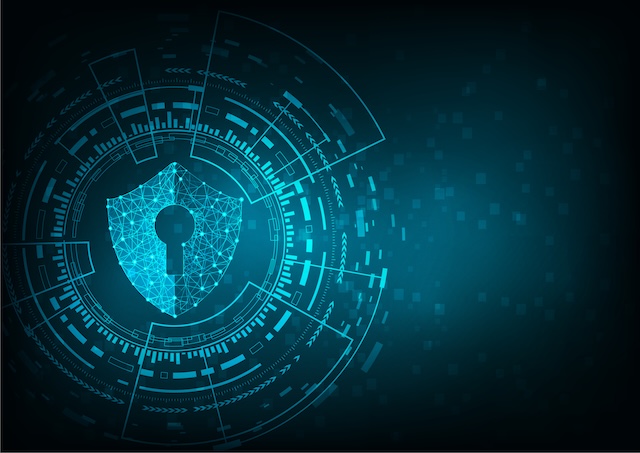
The ISM Cyber Security Framework (Information Security Manual) is a comprehensive set of guidelines for securing government and commercial systems against evolving cyber threats. Developed and maintained by the Australian Cyber Security Center (ACSC), the ISM Cyber Security Framework is an essential reference for cybersecurity professionals, particularly those charged with safeguarding critical enterprise environments. For CISOs, CSOs, SOC managers, threat intelligence leads, and cybersecurity architects, the ISM offers a robust methodology to align technical defenses with organizational risk management practices, ensuring resilience against sophisticated attacks.
What is the ISM Cyber Security Framework?
The ISM Cyber Security Framework is a principles-based cybersecurity framework that outlines cybersecurity controls designed to protect information and systems. It operates similarly to globally recognized standards like NIST SP 800-53 or ISO 27001, but is tailored toward practical threat mitigation based on real-world intelligence gathered by the Australian Signals Directorate (ASD).
- Definition and Purpose: The ISM defines a comprehensive baseline of security controls across governance, physical security, personnel security, and ICT security domains. Its primary aim is to help organizations manage risks associated with their information’s confidentiality, integrity, and availability.
- Structure: The ISM is divided into governance, personnel security, physical security, and technical security. Each topic contains “cybersecurity principles” supported by controls and guidelines.
- Dynamic Updates: Unlike more static frameworks, the ISM is regularly updated to reflect new threat intelligence, adversary techniques (including those classified under the ASD’s Strategies to Mitigate Cyber Security Incidents), and lessons learned from incident response activities.
The ISM is a flexible blueprint that enterprises can adapt based on their operational environments, risk appetites, and compliance requirements.
Why the ISM Cyber Security Framework Matters to Cybersecurity Operations
Understanding the value of the ISM Cyber Security Framework requires appreciating its operational focus on real-world threat mitigation and resilience building. It is not a theoretical model but a tactical and strategic guide drawn from live threat environments.
- Alignment to Active Threat Models: The ISM emphasizes the “most likely” and “most dangerous” threat vectors, helping organizations to prioritize defenses against advanced persistent threats (APTs), insider risks, and ransomware attacks.
- Risk-Based Approach: It empowers cybersecurity architects and SOC managers to take a risk-management approach rather than a compliance-first posture, fostering a culture where cybersecurity supports broader organizational resilience objectives.
- Operational Readiness: SOC managers and CTI leads can use ISM guidelines to structure monitoring, detection, and response activities around the tactics, techniques, and procedures (TTPs) most commonly observed in the threat landscape.
- Defense-in-Depth Principles: ISM strongly advocates layered defenses across network, endpoint, identity, and data protection domains, ensuring that controls in one area can mitigate security failures in other areas.
- Executive-Level Reporting: For CISOs and CSOs, the ISM provides a defensible, authoritative basis for cybersecurity investments and strategy communication to boards and executive stakeholders.
Ultimately, ISM adoption positions organizations to be proactive rather than reactive, aligning cybersecurity spending and activities with genuine threat reduction.
Key Components of the ISM Cyber Security Framework
Each core component of the ISM Framework addresses different layers of an organization’s cybersecurity needs, ensuring comprehensive coverage from policy to technical implementation.
- Governance and Risk Management: The ISM emphasizes senior executive accountability, cyber risk assessments, policy development, and security planning. Cybersecurity architects must integrate ISM-based governance practices into organizational risk frameworks such as COSO ERM or ISO 31000 to ensure holistic enterprise risk management.
- Personnel Security: Trust in individuals is critical. The ISM outlines personnel vetting, ongoing monitoring, insider threat mitigation strategies, and managing privileged access users. Organizations are encouraged to adopt a “trust but verify” model to balance employee empowerment with insider risk mitigation.
- Physical Security: Physical controls are recognized as foundational. Recommendations include facility access controls, server room protections, and secure handling of sensitive media. Extending physical security principles to mobile and home environments is critical in an era where remote work is prevalent.
- ICT Security: The ISM dives deepest into the ICT security domain, providing prescriptive technical controls such as system hardening, vulnerability management, endpoint protection, and network segmentation. Best practices include applying whitelisting, multi-factor authentication (MFA) at all critical access points, and rigorous patch management cadences.
These components are designed to work together seamlessly, building a security posture that is integrated, layered, and resilient to compromise.
Practical Applications of the ISM Cyber Security Framework in Enterprise Security Operations
Integrating the ISM Cyber Security Framework into daily security operations can transform how an organization detects, responds to, and recovers from cybersecurity threats.
- SOC Optimization: SOC managers can align monitoring use cases to ISM controls to ensure visibility across critical attack surfaces. For instance, leveraging security information and event management (SIEM) platforms to detect violations of ISM-required configurations and network segmentation policies enhances situational awareness.
- Threat Hunting and CTI Alignment: Cyber Threat Intelligence teams can use ISM baselines to develop hypotheses for threat hunting exercises. By focusing on TTPs prioritized by ISM, CTI leads ensure that threat intelligence is immediately actionable.
- Security Architecture and Engineering: Cybersecurity architects should map enterprise architectures (e.g., zero-trust models) directly against ISM principles, ensuring each security control layer addresses a known threat vector. Technical architects should also integrate ISM recommendations into system development life cycles (SDLCs) to ensure security-by-design practices.
- Incident Response (IR) Readiness: IR teams can structure playbooks around ISM incident classification models and response priorities. This ensures that incidents are triaged and handled according to recognized severity and impact frameworks, improving mean time to detect (MTTD) and mean time to respond (MTTR).
- Compliance and Audit Synergies: For CISOs responsible for navigating complex regulatory landscapes (e.g., GDPR, CCPA, HIPAA), adopting ISM principles can offer synergies, helping demonstrate “reasonable security measures” during audits or investigations.
Incorporating ISM-based metrics and maturity models into enterprise cybersecurity scorecards can further enhance ongoing risk communication with executive leadership.
Emerging Trends: Evolving the ISM Cyber Security Framework for Modern Threat Landscapes
The ISM Cyber Security Framework continues to evolve, adapting to the rapidly shifting nature of cyber threats and enterprise IT environments.
- Cloud Security Integration: Newer ISM updates include prescriptive advice on securing public, private, and hybrid cloud environments, reflecting the migration of sensitive workloads outside traditional data centers. Organizations must focus on cloud-native security controls, including identity-centric microsegmentation, encryption, and container security.
- Supply Chain Risk Management: In response to increasing third-party risks, ISM highlights the need for vetting and securing supply chain partners. Practitioners must extend their enterprise security monitoring to include third-party assets and data flows.
- Emergence of Zero Trust Principles: The ISM’s advocacy for minimal privilege, strong identity verification, and network segmentation aligns closely with zero-trust architectures. Forward-leaning enterprises are using ISM controls as scaffolding for implementing comprehensive zero-trust strategies.
- Operational Technology (OT) Security: For industries managing industrial control systems (ICS) and critical infrastructure, ISM updates increasingly address OT security, focusing on segmentation, monitoring, and incident response capabilities tailored to OT environments.
As adversaries grow more sophisticated, the ISM framework’s continual adaptation ensures that organizations remain aligned with the forefront of cybersecurity best practices.
How Managed Security Services Leverage the ISM Cyber Security Framework
Managed Security Services Providers (MSSPs) increasingly leverage the ISM Cyber Security Framework to deliver proactive, standards-aligned cybersecurity operations for enterprise clients. By integrating ISM principles into their offerings, MSSPs help organizations align with best practices, optimize threat defenses, and maintain operational resilience against emerging threats.
- Baseline Compliance and Control Implementation: MSSPs use the ISM as a foundation for establishing security baselines across client environments. MSSPs deploy standardized governance policies, system hardening baselines, access management protocols, and network segmentation architectures by mapping ISM controls to client systems. This enables clients to rapidly comply with recognized security postures, which is beneficial for highly regulated sectors or organizations with limited in-house security maturity.
- Threat Detection and Response Optimization: ISM-driven managed detection and response (MDR) services are built around the framework’s emphasis on monitoring, detection, and incident handling aligned to real-world threat intelligence. MSSPs align SIEM tuning, endpoint detection and response (EDR) deployments, and playbook development directly to ISM guidance. This alignment ensures efficient detection of anomalous activities, quick threat containment, and coordinated incident response workflows, dramatically improving MTTD and MTTR metrics.
- Security Architecture and Continuous Improvement: Through ISM-aligned security architecture reviews and technical assessments, MSSPs provide ongoing recommendations to evolve client environments. Vulnerability management, patch prioritization, identity and access management (IAM) enhancements, and security awareness initiatives are all mapped to ISM controls. Regular security posture assessments benchmarked against ISM maturity models enable continuous improvement cycles and inform strategic cybersecurity investments.
- Reporting and Executive Risk Communication: MSSPs leverage ISM terminology and structure in client reporting, enabling cybersecurity leaders to deliver clear, defensible updates to boards and executive stakeholders. By framing risk management outcomes within ISM-aligned reporting formats, MSSPs help clients articulate their cybersecurity posture relative to recognized best practices, regulatory expectations, and threat trends.
By embedding ISM Cyber Security Framework principles across service delivery, MSSPs operationalize cybersecurity best practices and position themselves as strategic partners in building resilient, threat-informed security programs. This approach supports enterprise risk management objectives while ensuring agility against the evolving threat landscape.
Conclusion
The ISM Cyber Security Framework offers a convenient, operationally relevant guide to mitigating modern cyber threats for cybersecurity architects, SOC managers, CTI leads, analysts, CISOs, and CSOs at Fortune 1000 companies. Its focus on threat intelligence-informed controls, continuous updates, and broad applicability across enterprise environments makes it an indispensable tool for any organization serious about achieving robust, measurable cyber resilience. Embedding the ISM into cybersecurity operations strengthens defenses and builds an organizational culture where security is proactive, strategic, and aligned to real-world risks.
Deepwatch® is the pioneer of AI- and human-driven cyber resilience. By combining AI, security data, intelligence, and human expertise, the Deepwatch Platform helps organizations reduce risk through early and precise threat detection and remediation. Ready to Become Cyber Resilient? Meet with our managed security experts to discuss your use cases, technology, and pain points and learn how Deepwatch can help.
Learn More About the ISM Cyber Security Framework & Related Topics
Deepwatch offers a range of resources tailored for cybersecurity operations professionals aiming to enhance their understanding of the ISM Cyber Security Framework, including:
- Deepwatch ATI Annual Threat Report 2024: This report provides a high-level analysis of threat trends, aligning with the ISM Cyber Security Framework’s threat-informed governance and risk management principles. It supports strategic decision-making about investment priorities, controls implementation, and adversary defense alignment.
- Cyber Architecture: Moving a Concept into Practice: This blog post focuses on building resilient security architectures, a core ISM principle tied to governance, ICT security, and continuous improvement.
- Threat Intelligence Section: Regular threat intelligence updates ensure alignment of security operations with real-time threat landscapes, aiding strategic threat modeling and incident preparedness under ISM guidance. Valuable for CTI leads and CISOs updating risk profiles quarterly.
